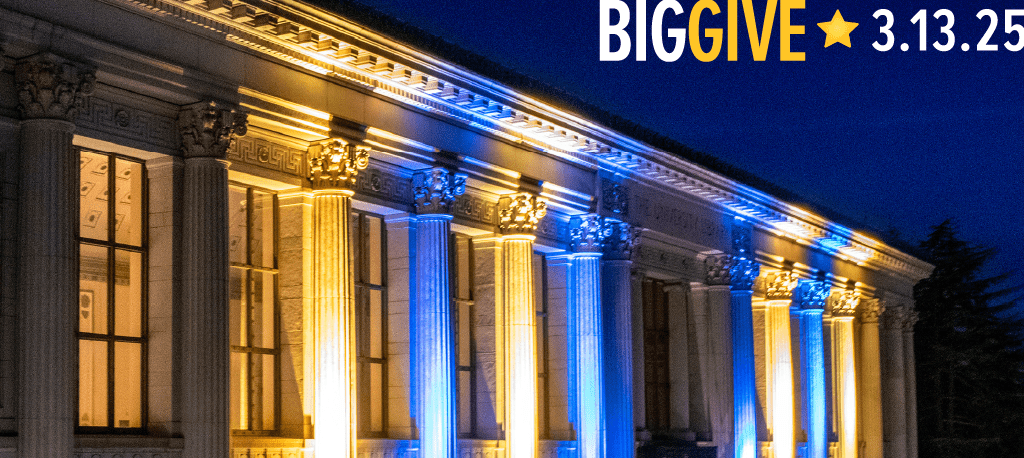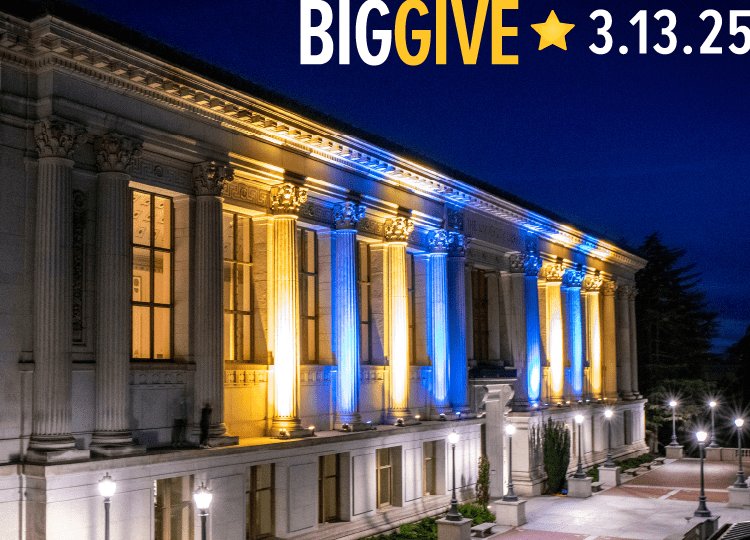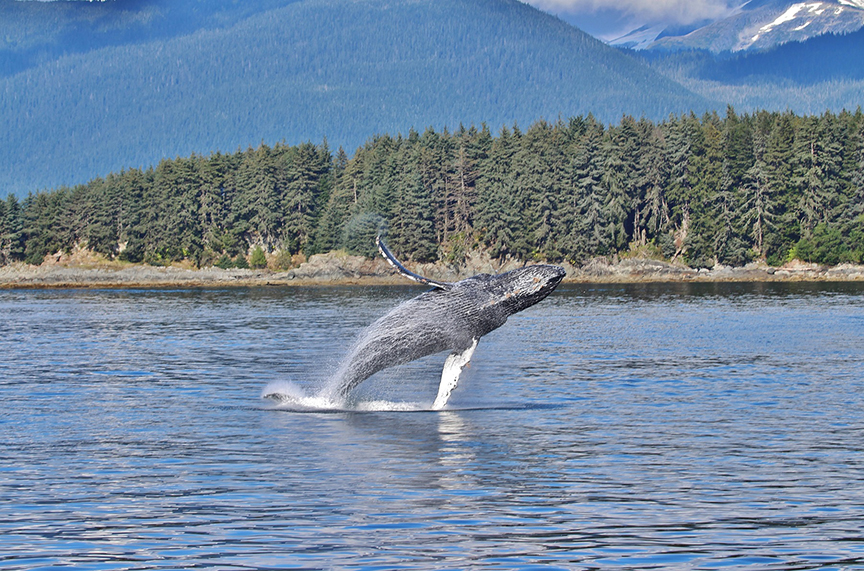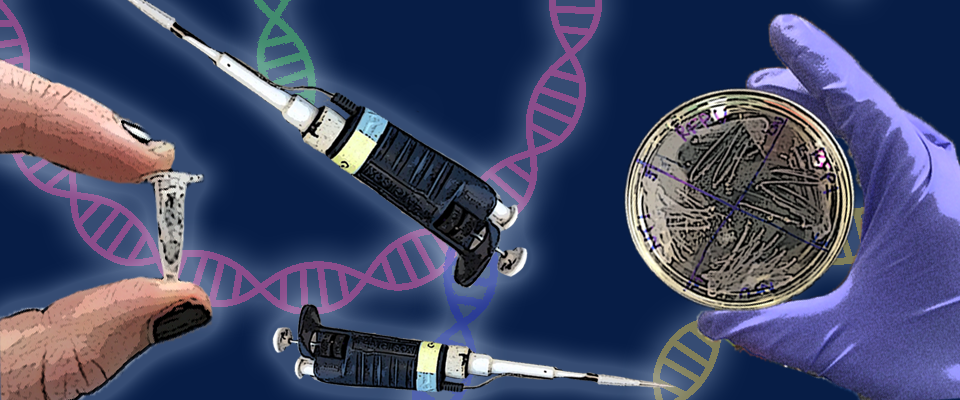Berkeley is teaching the public how to edit genes. But are we ready?
The announcement came in June. Berkeley Extension, the continuing education arm of UC Berkeley, was offering its first-ever introductory course—CRISPR Genome Editing: From Biology to Technology—on the revolutionary new tool that allows scientists to make precise edits in the genome. A lab and lecture course on CRISPR for anyone who has the interest (and money) to enroll? What a crazy idea. It seemed a bit like offering a workshop on how to enrich plutonium.
I had to take it. A couple months later, I was buying school supplies.
Now here I am, four weeks of lecture and three weeks of lab under my belt. What follows is a condensed and edited collection of my notes from the experience. Am I now a CRISPR whiz, able to edit your genes for good or evil?
Read on.
Lecture Day 1: Wednesday, July 24, 2019. Berkeley Extension, 6:30 p.m.
6:30 on the dot. A tall man appears at the front of class. Must be the instructor, though he doesn’t look the part. Mustache. Jeans. Heavy boots. Looks more workman than nerdy lab rat. Tells us he owns a biotech company (“full disclosure”) but can’t tell us which one. “The joke that I tell is that I’ve been trying to invent CRISPR since 1987.” Laughs at his own joke. Ha ha. A nerdy lab rat after all.
Instructor reminds us that this thing we’re about to study is a big deal. “In a way, CRISPR-Cas9 is a platform for doing whatever it is we can conceive of. For me it’s everything I’ve ever wanted to do as a scientist. It’s the tool I’ve been lusting after for 40 years.”
The tech bros in the back look smug. Or maybe I’m just imagining.
Tech Bro #1 cuts to the chase, asks about off-target events. (Collateral damage.)
Instructor shrugs, calls them “the tempest in the teapot.” A big deal but not that big. His view: potential benefits > potential harms.
Time to split into teams. Group project: Modify a gene of our choice! Anyone else feel unprepared for this? Instructor organizes teams to have equal number “science” and “non-science” students. I’m “non-science.” (NB: I have a biology degree. Still have no idea what’s going on.)
On my team:
Tech Bro #1, Anxious Eye Doctor, Businessman, and British Dude. Turns out British Dude is campus’s main Cas9 dealer. Laughs when I ask how much for a vial. Answer: $150 for 3 mg.
Eager team! Immediately start throwing out names of genes, rare diseases, unfamiliar acronyms. It’s decided: we’re doing CCR5, the gene that was modified in the Chinese babies we all read about. Go big or go home, I guess.
First step—Figure out how to get rid of the bad gene, and how to show it worked.
Anxious Eye Doc: Can we just knock the gene out?
Tech Bro #1: Or we can insert a mutated version of it.
Me (aka Clueless Journalist): How will we know if it’s successful?
British Dude: Just stick some Green Fluorescent Protein in and make it glow!
Lab Day 1: Monday, July 29, 2019. Valley Life Sciences Building, 2 p.m.
Lab orientation day. Spacious, well-lit room. Long, black resin countertops. Scary-looking machines on lab benches. We make small talk, swivel nervously on stools. Lab TAs introduce themselves with preferred pronouns. (She/her for both.)

Time to pick lab partners.
Married couple insists on being partners. She studied biology in China. Fled during Tiananmen. He’s an astronomer. Calls himself wife’s “tech admin.” TAs want to split them up. Everyone in class has an opinion on the matter, especially Romanian Woman (flowery scarf, talks out of turn, looks the way perfume smells). In the end, TAs compromise, let couple sit at the same table.
Husband wonders: “If we’re taking it not-for-credit do we still have to do all the work?”
I wonder: If you don’t want to do the work, why take the class?
(To be fair, I’m not doing all the work either.)
Today’s goal: “inoculate cultures with bacteria containing Cas1-Cas2 expression plasmid.” Meaning: make bacteria produce Cas proteins; add invasive viral DNA to sample; watch as Cas proteins do their thing. TA #2 demonstrates protocol; students are anxious to get started—keep interrupting, asking for permanent markers, more pipette tips….
Oops! TAs forgot to teach us how to use pipettes. Quick pipette tutorial.
My team includes:
A woman who wants to use CRISPR for art (aka “bioarts”) and a nerdy-looking guy—a recent Cal grad. We chat as we pipette. Bioartist’s dream job: Artist-in-residence at a lab. Doesn’t know what she’ll do w/ CRISPR yet. Taking class to learn what’s possible. Says artists are important for translating science, breaking down barriers.
Recent Cal Grad wears a Fitbit. Wire-frame glasses. Currently an autopsy assistant. Wants to go to med school, study CRISPR for treating heart disease. He hearts the heart. His favorite organ! Tells me about removing one from a cadaver. “Have you ever seen Indiana Jones and the Temple of Doom? When he pulls out the heart? That’s what it was like.” Mimics pulling heart from chest.
TA #2 distributes bacteria. Warns us: Be careful. Chance of contamination is high. But also: Don’t stress! “We want this to be fun. Hopefully, there will be one successful sample.”
Lecture Day 2: Monday, July 29, 2019. Berkeley Extension, 6:30 p.m.
Topic: Patent disputes. Players: UC Berkeley and Harvard/MIT. Contest over who owns CRISPR tools. Takeaway: Last one to the patent office is a rotten egg!
In order to be patentable, Instructor says invention must be a) “novel” and b) “unobvious.” Not too hard to prove novel but unobvious = really subjective. No clear rules for what does/doesn’t get patent.*
*Cas9 Dealer tried to read some patents. Verdict: “Utterly impenetrable.”
Lab Day 2: Tuesday, July 30, 2019. Valley Life Sciences Building, 2 p.m.
Chaos in the lab. Romanian Woman accidentally parked her car in Nobel Laureate spot. Has to set up tubes fast so she can repark.
Wife is chatting as usual. Husband tells her to label her tubes, stop talking, concentrate. Wife covers her mouth, giggles.
PCR day! Aka, polymerase chain reaction—invented by Nobel laureate Kary Mullis. Instructor: “PCR is nothing more than a molecular Xerox machine.” (Also: “Bacteria are nothing more than a bag of DNA and enzymes and CRISPR.”)
La di dah. We wait, we chat. Meanwhile, microscopic reactants photocopy our DNA.
Romanian Woman returns, cheerful. No parking ticket.
We wait some more.
TA #1 reassures us: “Even with novices it almost always works.”
All work, except one—Recent Cal Grad’s.
Lecture Day 3: Wednesday, July 31, 2019. Berkeley Extension, 6:30 p.m.
Husband tells everyone he’s allergic to lab. Shows rash on his arm. Asks Instructor, “Can you CRISPR it outta me?”
Instructor: “Sure, give me your elbow and next week we’ll do it.”
I turn to Cas9 Dealer. Should people in this class have access to CRISPR? He laughs.
Instructor checks on group projects. Everyone stressed—except us. We have a plan (no thanks to me): Get rid of HIV-associated CCR5 gene. Replace with non-functioning version. Voila: HIV-resistant baby!
Instructor: “You’re gonna do what the Chinese dude did?” (He means He Jiankui, the researcher who created first “designer babies.”)
Cas9 Dealer: “But ethically!”
Lab Day 4: Thursday, August 1, 2019. Valley Life Sciences Building, 2 p.m.
How do you sequence a gene? Easy. Send it to a sequencing facility. Only takes a day.
Yesterday, instructors sent off bacterial DNA fragments. Today, loooong lists of A’s, T’s, C’s, G’s come back. Then we use an app (there’s one for everything!) called SnapGene to import sequences & identify gene origins. In this case: viral.
TA #2 explains how to read a sequence. Tells us about her mom, diagnosed with breast cancer. She sequenced her mom’s DNA and discovered a mutation in the gene, BRCA2.
Healthy people have one nucleotide (C). Her mom has two (CT). “T” was accidentally inserted. A typo.
TA #2 shows us where the mutation occurs. Wow. One extra nucleotide → shift in sequence → incomplete production of important protein → cancer.
Good reminder this isn’t just a class. Real people affected by the work.
Wife tears up.
Lab Day 5: Monday, August 5, 2019. Valley Life Sciences Building, 2 p.m.
This week = very important. First time doing full CRISPR protocol. Romanian Woman is already stressed.

Not Bioartist. She’s all business, pipetting away. Describes CRISPR as “sculpting on the molecular level.” Loves lab work. Class project—not so much. She wanted to design something cool but team chose a disease-related gene. Rolls eyes while setting up PCR tubes. “We don’t have a clue what we’re doing.”
Recent Cal Grad relieved. “Oh, you too?”
Apparently everything we’re doing manually in lab can be outsourced.
TA #2 compares pieces of RNA/DNA to flavored syrups in Starbucks lattes. Says: Just order sequences online for $20, have it in days. Easy!
Bioartist suddenly realizes her effort = futile. “There are so many steps to make mistakes on.” Sighs. “It’s worse than baking—you don’t even get poorly made cookies if it doesn’t work.”
Lecture Day 4: Monday, August 5, 2019. Berkeley Extension, 6:30 p.m.
Bad news: Humanity is screwed. Warming threatens crops. Good news: CRISPR could save us. Take corn—Making drought-resistant corn with conventional breeding? 6-8 generations (8-10 years). Making drought-resistant corn with CRISPR? 1-2 generations (2-3 years). Surviving the apocalypse? Priceless.
Class very engaged. Plants are fascinating! Wheat has six genomes, strawberries have TWELVE. (Humans have one. So lame.)
Wait! Bombshell news: apparently CRISPR-modified plants not considered GMO. For now. Obsession with GMOs is kind of silly anyway, guest lecturer says. Papayas have had foreign DNA since 1992. Sweet potatoes contain agrobacterium genes from natural genetic modification event thousands of years ago.
Romanian Woman wonders, “Is there anything that doesn’t have foreign or modified genes?” Everyone laughs. Answer is obvious: not for long.
Lab Day 7: Wednesday, August 7, 2019. Valley Life Sciences Building, 2 p.m.
Today’s. The. Day. We’re assembling our CRISPR “machines.” Molecular scissors, some people call them.
Seems cool, turns out to require a lot of math. Have to calculate exactly how much of our sample needed to achieve precise concentration. Lots of equations. Lots of scribbling. Tensions high, people snap at each other. Wife feels dizzy, thinks she’s having an allergic reaction. Bioartist says she HATES math.
Guess what. CRISPR = not so easy after all. Doubtful mine worked.
Lecture Day 5: Wednesday, August 7, 2019. Berkeley Extension, 6:30 p.m.
Breaking news! Apparently the genome is a piano.
Guest lecturer says good piano keys (genes) are important, but equally important how they’re played (expressed). “A piano doesn’t make any noise if there isn’t a player. In a normal system, we want to play the whole piano and have it sound right.” But sometimes the piano is played wrong (normal genes not expressed). Enter: CRISPR.
Researchers can modify gene expression using tools like CRISPRi (“i” for interference). Lecturer says CRISPRi is “completely magic” and “does whatever you want it to do.” Compares it to a light-switch that can turn genes on/off at will. All you need: computer, test subjects, $$$$. Instructor says mice = ideal test subjects because cheap/no one cares about them. Calls them “the Walmart of organisms.”
Romanian Woman, in awe: “This adds another extraordinary layer of gene-editing complexity.” She’s right. Now we* can edit genes, gene expression, the proteins that control gene expression… What can’t we edit? The world is our crisper drawer.
*Not me. Unless a miracle occurs tomorrow.
Lab Day 8: Thursday, August 8, 2019. Valley Life Sciences Building, 2 p.m.
Enter lab, greeted w/ shouts of excitement.
Romanian Woman: “It worked—all our samples worked!”
TA #2: “CRISPR!”
So that’s it. We did it. We CRISPR’d bacterial DNA. In less than two weeks.
Now what?
Lab Day 9: Monday, August 12, 2019. Valley Life Sciences Building, 2 p.m.
Last week! It’s hot today. Everyone’s loopy. Keep saying how much they’re going to miss each other. Wife says, “First week we are confused. Second week we start to get it. Third week it makes sense, and then it’s over.”
Today we CRISPR again but in real, living bacteria. First: insert gene to make them glow red. Then: insert gene to make them glow green. We must be CRISPR experts by now!

I ask classmates: “Do you feel ready to go CRISPR the world?”
» Bioartist (possibly still dispirited by all the math, possibly just realistic) says, “I don’t know. … I think not.” Laughs. “I think we’ve learned every possible thing that could go wrong.”
» Romanian Woman seems confident, wants to use CRISPR to manufacture universal donor (type O negative) blood: “Yes. I know enough to do it myself because I will have help. It’s a matter of orienting yourself.”
» Anxious Eye Doc wants to use CRISPR for optic nerve regeneration. Says of course she feels ready because she “did all the reading.” Eyes me disdainfully.
I wonder out loud: Is teaching amateurs to use CRISPR really a good idea?
» Anxious Eye Doc: “There should be a background check for all students.” Shoots Romanian Woman a look.
» Romanian Woman raises eyebrows at married couple: “We’re training everyone to edit genes. How do we know they’re not a bioterrorist? Who knows what [Wife] is doing in her garage?”
Everyone laughs. Almost everyone. Husband not amused.
Do researchers have to get certified to use CRISPR? TA #2 says no. “It’s just been rolled into our repertoire of lab techniques at this point.” Does that scare her? “No.” She laughs. “Maybe it should.”
Lecture Day 6: Monday, August 12, 2019. Berkeley Extension, 6:30 p.m.
Lecturer with pile of stringy blonde dreadlocks. No discernible sense of humor. Here to discuss something scary: gene drives. Fancy technology that takes genes and propagates them into a population really quickly. Like, really quickly. And permanently.
Dreadlocks says gene drives could be used to engineer malaria-resistant mosquitoes.
Romanian Woman wants to know: “Can mosquitoes be used as bioterrorism with this technology?” Everyone laughs. Dreadlocks says, “Well, we do actually have funding from the Department of Defense for this research.” In other words—yes, can be used as a weapon.
Bioartist asks if it’s ethical to test gene drive technology in developing countries in Africa. Seems to be saying: Who gets to decide who’s the guinea pig in the experiment?
Dreadlocks avoids question. Talks about impacts of malaria. Says, “It’s hard to imagine a negative consequence worse than a child dying every minute.”
Bioartist looks unconvinced.
Instructor: “There’s always going to be some off-target events that we won’t know until we test it on a population.”
Me: “Are there really problems that we can’t anticipate? We just have to throw the technology into a population and see what happens?”
Instructor: “Yep.”
Lecture Day 7: Wednesday, August 14, 2019. Berkeley Extension, 6:30 p.m.
Last lecture! Lots to do. Lots of nervous chatter. Clock ticking. After three weeks of class, only one hour left to discuss ethics. Good thing CRISPR isn’t too controversial!
Question on whiteboard reads: To what extent should CRISPR be permitted?
Romanian Woman: “If you inherit this [defective] gene and there is a way to fix it—would you not do it?” Says parents have the right to a “normal child.” Question: What is “normal”? Who decides?
Plus, fancy medical treatments cost $$$! Access to gene therapies may depend on ability to pay. Could just increase disparity in healthcare.
Speaking of: Should CRISPR only be allowed for medical purposes? What about cosmetic enhancements?
Romanian Woman wonders: “Where does the healing end and the vanity start? And who’s drawing the line?”
Good point. Not always easy to distinguish medical necessity from enhancement.
Some are obvious. Sickle cell resistance? Medical. Eye color? Enhancement. Memory Augmentation? Enhancement. Alzheimer’s treatment? Medical.
Some are not so obvious. “Certain enhancements could be seen as boosting your overall health,” guest lecturer says. Gives example of skin color. In current society, being person of color may be danger to health. Should whitening complexion be allowed if it minimizes risk of harm? Seems crazy but already happening, guest lecturer says (mentions Michael Jackson). Now even easier with CRISPR! Class seems disturbed. Bioartist says, “an advantage in this society is being male.” Wonders if turning baby girls into baby boys could be considered medical treatment (?!?!?!).
Now we’re on a roll.
Bioartist: “What about designing babies that could go to Mars?”
Frenchman: “What about drought-resistance? We talked about plants but why not humans?”
Wait. Young Business Woman reminds us that most traits require MANY genes. No single gene for intelligence, attractiveness, successful leadership, etc. “What is the running gene? The ‘Usain Bolt gene’?”
It’s starting to sound like sci-fi. I’m skeptical, ask guest lecturer what he thinks. How close are we really? He laughs. “I think it’s already happening.”
The question is not if/when but how to regulate.
Technology moving too fast. Need smarter policy! Need more people talking about it!
Maybe a CRISPR class for the public not such a crazy idea after all.
Lab Day 12: Thursday, August 15, 2019. Valley Life Sciences Building, 2 p.m.
A surprising turn of events. No one’s bacteria glow green—except Recent Cal Grad’s! Everyone crowds around to look at his plate, take pictures, see what success looks like. He smiles shyly.

Why didn’t ours work? Are we bad scientists? If we can’t even make stupid E. coli glow green have we learned anything at all? Puts damper on whole course, honestly.
TA #1 says not to worry. “It’s probably luck.”
So we don’t. Instead we exchange: hugs, contact information, jokes, gratitude. Make tentative plans to meet for drinks. Probably never will but even so: I like these people.
Still, I leave worried about “democratizing” CRISPR. I picture biohackers in hoodies* and latex gloves huddled over Petri dishes, re-engineering the species gene-by-gene. (*Note to self: Stop watching Mr. Robot.)
And yet. CRISPR shouldn’t belong to the elite either. Too powerful for a handful of like-minded people to hold. We need conversations, surveys, collaboration, debates. Need all hands on deck.
Ultimately: The technology is here, ready or not. People discovered CRISPR, people use CRISPR, people will be CRISPR’d. People deserve to know—and have a say in—how it’s used.
For everyone’s sake, I’ll stick to writing about it.
Senior online editor Leah Worthington has so far kept her promise about not CRISPR-ing in the office.
From the Winter 2019 issue of California.



















